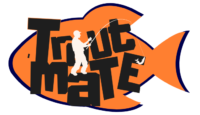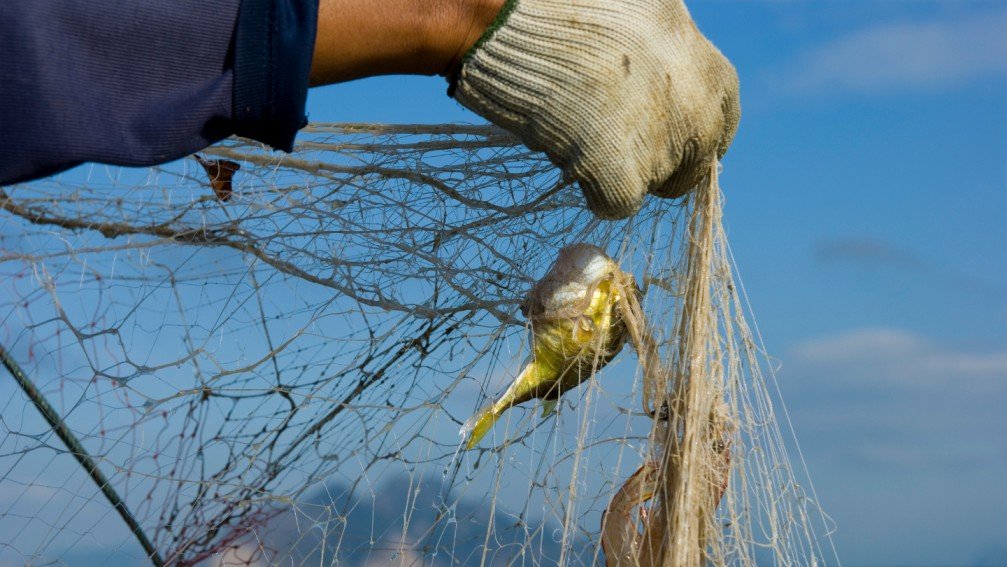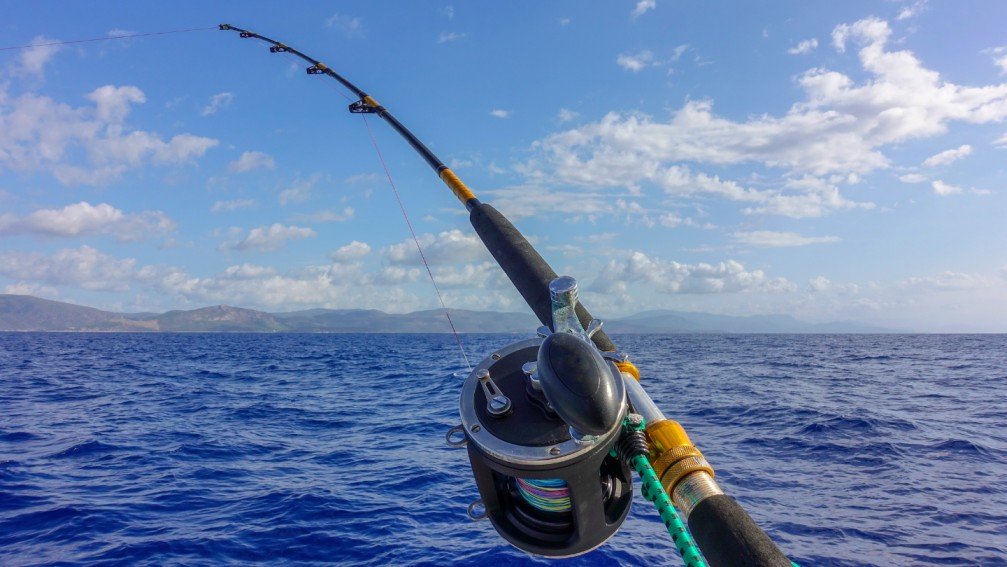To spearfish for lobster, locate them in rocky crevices and use a spear to catch them. Ensure you follow local regulations.
Spearfishing for lobster combines skill, patience, and an understanding of marine environments. Lobsters often hide in rocky crevices and coral reefs, making them challenging to spot. Divers need to be equipped with the right gear, including a spear, wetsuit, and dive mask.
Proper technique and knowledge of local regulations are essential to ensure a successful and legal catch. Safety is also crucial; always dive with a buddy and be aware of your surroundings. With practice and persistence, you can enjoy the thrill of catching your own fresh lobster.

Credit: svreach.com
Introduction To Spearfishing For Lobster
Spearfishing for lobster combines adventure with delicious rewards. This activity involves diving underwater and catching lobsters using a spear. It requires skill, patience, and knowledge of the sea. In this section, we will explore the basics of spearfishing and why it’s a great way to catch lobsters.
What Is Spearfishing?
Spearfishing is an ancient method of fishing. It uses a spear or a spear gun to catch fish or other marine creatures. Divers often use snorkels, masks, and fins. Some also use scuba gear. The goal is to spot a target, aim, and catch it with the spear.
| Equipment | Usage |
|---|---|
| Spear Gun | Used to catch the lobster |
| Snorkel | Helps you breathe underwater |
| Mask | Provides clear vision underwater |
| Fins | Helps you swim faster |
Benefits Of Spearfishing For Lobster
Spearfishing for lobster offers many benefits. Here are a few:
- Fresh Seafood: You get the freshest lobster possible.
- Physical Exercise: It’s a great way to stay fit.
- Adventure: Experience the thrill of underwater hunting.
- Sustainability: It’s an eco-friendly way to fish.
Spearfishing can be a fun and rewarding hobby. It can also be a serious sport. Whether you are a beginner or an expert, catching a lobster is always exciting.

Credit: wbdiving.com
Essential Gear And Equipment
Spearfishing for lobster requires specific gear. You need to be prepared. The right equipment makes the experience safe and fun.
Spearfishing Gear
Spearfishing gear is vital for a successful catch. Here’s what you need:
- Speargun – Choose a lightweight and easy-to-handle speargun.
- Wetsuit – Keep warm and protected with a durable wetsuit.
- Fins – Opt for strong and comfortable fins for better movement.
- Mask and Snorkel – A clear mask and a dry snorkel are essential.
- Weight Belt – Use a weight belt for better buoyancy control.
Lobster Catching Tools
To catch lobsters, you need some specific tools. Here’s a list:
- Lobster Gauge – Ensure lobsters are of legal size with a lobster gauge.
- Lobster Bag – Use a sturdy bag to store your catch.
- Gloves – Protect your hands with strong, durable gloves.
- Flashlight – A waterproof flashlight helps you see lobsters in dark areas.
Choosing The Right Location
Spearfishing for lobster is an exciting and rewarding adventure. Choosing the right location is crucial for a successful catch. Understanding where lobsters live and the best coastal areas can make all the difference.
Best Coastal Areas
Finding the right coastal area is essential for spearfishing. Some coastal areas are teeming with lobsters.
| Region | Notable Spots |
|---|---|
| California | Channel Islands, Catalina Island |
| Florida | Florida Keys, Biscayne National Park |
| Maine | Casco Bay, Penobscot Bay |
These areas offer rich habitats and abundant lobster populations. Ensure you follow local regulations and obtain necessary permits.
Understanding Lobster Habitats
Lobsters prefer rocky and reef-filled areas. These spots provide hiding places and food. Look for underwater structures like:
- Rocky outcrops
- Coral reefs
- Shipwrecks
Lobsters are often found in crevices and under rocks. They are nocturnal creatures, so early morning and late evening are prime times for spearfishing.
Remember, lobsters are sensitive to changes in water temperature. They thrive in cooler, oxygen-rich waters. Checking local water conditions can improve your chances of success.
Safety Precautions
Spearfishing for lobster can be thrilling. Yet, safety should always come first. This ensures a fun and accident-free adventure. Below, find key safety tips for diving and handling lobsters.
Diving Safety Tips
Before diving, check your equipment. Ensure your wetsuit, mask, and fins fit properly. Proper gear protects you from cold and sharp objects.
Always dive with a buddy. Never dive alone. A partner can help in emergencies. Agree on hand signals for underwater communication.
Check the weather forecast. Avoid diving in strong currents or bad weather. This reduces the risk of accidents.
Stay hydrated and well-nourished. Drink water and eat light before diving. This keeps your energy levels up.
Know your limits. Do not push yourself too hard. Rest if you feel tired.
Be aware of your surroundings. Watch out for boats, other divers, and marine life. Respect all underwater creatures.
Handling Lobsters Safely
Wear gloves when handling lobsters. Gloves protect your hands from sharp claws and shells.
Use a lobster snare or net. Avoid grabbing lobsters with bare hands. This reduces injury risk.
Check local regulations. Follow the rules on lobster size and quantity. This helps preserve marine life.
Store lobsters in a cooler. Keep them cool and alive until you reach shore.
Handle lobsters gently. Avoid rough handling to prevent stress and injury to the lobster.
| Diving Safety Tips | Handling Lobsters Safely |
|---|---|
| Check your equipment | Wear gloves |
| Dive with a buddy | Use a lobster snare |
| Check the weather | Follow local regulations |
| Stay hydrated | Store lobsters in a cooler |
| Know your limits | Handle gently |
| Be aware of surroundings |
Techniques For Finding Lobsters
Spearfishing for lobsters is an exhilarating adventure. Knowing the right techniques is crucial. This section will focus on reading the ocean floor and identifying lobster hiding spots. Both skills are essential for a successful lobster hunt.
Reading The Ocean Floor
Understanding the ocean floor is key to finding lobsters. Look for rocky areas with plenty of crevices. Lobsters love hiding in small spaces. Sandy areas are less likely to have lobsters. Focus your search on rocky and reef areas.
Use a snorkel or scuba gear to explore underwater. Take your time to scan the area thoroughly. Look for signs of lobster activity. You might see lobster tracks or discarded shells.
Identifying Lobster Hiding Spots
Lobsters hide in crevices and holes in rocks. Look under ledges and inside small caves. Use a flashlight if the area is dark. Lobsters often hide during the day and come out at night.
Pay attention to the size of the holes. Lobsters need enough space to fit their bodies. Small holes are not good hiding spots. Look for larger openings where lobsters can move freely.
Using a tickle stick can help you find lobsters. Gently probe crevices to see if a lobster is hiding. If you feel resistance, a lobster might be there. Be gentle to avoid harming the lobster or damaging its habitat.
Here is a quick checklist for identifying lobster hiding spots:
- Rocky areas with crevices
- Under ledges and inside caves
- Larger openings in rocks
- Signs of lobster activity (tracks, shells)
Spearfishing Techniques
Master spearfishing for lobster by diving at night when lobsters are most active. Aim for rocky crevices and use a flashlight to spot them.
Approaching Lobsters
Before spearfishing for lobsters, approach them slowly and quietly to avoid scaring them away.
Effective Spearfishing Methods
For successful lobster spearfishing, use the following techniques:
- Stay calm and move stealthily.
- Aim precisely for the head or between the eyes.
- Practice your aim regularly for accuracy.
Approaching Lobsters
Approach lobsters slowly and quietly to avoid scaring them away.
Effective Spearfishing Methods
For successful lobster spearfishing, remember to stay calm and move stealthily. Aim precisely for the head or between the eyes, and practice your aim regularly for accuracy.
Legal Considerations
Spearfishing for lobster is an exciting adventure. But it comes with responsibilities. You need to follow the laws to protect marine life. Here are some important legal aspects.
Licensing Requirements
Before spearfishing for lobster, you need a fishing license. Each country or state has its own rules. Check local regulations to know what type of license you need. Some places offer recreational licenses for personal use. Others may need a commercial license if you plan to sell lobsters.
Here is a simple breakdown of common licenses:
| Type of License | Purpose | Where to Obtain |
|---|---|---|
| Recreational License | Personal Use | Local Wildlife Agency |
| Commercial License | Selling Lobsters | Local Fisheries Department |
Fishing Regulations
Each region has specific fishing regulations to follow. These rules protect the lobster population and the environment. Here are some key points:
- Size Limits: Only catch lobsters of a certain size.
- Bag Limits: Limit on the number of lobsters you can take.
- Seasonal Restrictions: Some areas have open and closed seasons.
- Protected Areas: No fishing in designated marine reserves.
Always check the latest regulations before you go spearfishing. Rules can change frequently. Following the law helps conserve marine life for future generations.
Post-catch Handling
After catching lobsters, proper handling is crucial. This ensures your lobsters stay fresh and taste great. Let’s look at the best practices for storing and preparing your catch.
Storing Your Catch
Storing your catch correctly keeps the lobsters fresh. Follow these steps:
- Keep lobsters cool and moist.
- Use a cooler with ice packs.
- Wrap lobsters in seaweed or a damp cloth.
- Avoid fresh water, it harms lobsters.
Check lobsters regularly. Make sure they remain alive until cooking.
Preparing Lobsters For Cooking
Preparing lobsters for cooking requires some simple steps. Here’s a quick guide:
- Rinse lobsters under cold water.
- Place them in the freezer for 15 minutes. This numbs them.
- Boil a large pot of salted water.
- Submerge lobsters headfirst into boiling water.
Cooking times vary by size. Small lobsters need 8-10 minutes. Larger ones need 12-15 minutes. Serve immediately or cool in an ice bath.
Tips From Expert Spearfishers
Learning to spearfish for lobster can be thrilling. Experts share their wisdom to help you succeed. Follow these tips to become a pro.
Common Mistakes To Avoid
Even seasoned spearfishers can slip up. Avoid these common mistakes:
- Not Checking Tides: Always check the tides before you dive.
- Ignoring Local Regulations: Respect local fishing laws and seasons.
- Using Wrong Gear: Use the right spear and tools for lobsters.
- Overlooking Safety: Never dive alone. Always use a buddy system.
- Being Impatient: Patience is key. Don’t rush your dives.
Pro Tips For Success
Experts offer these tips to improve your spearfishing:
- Scout Locations: Research best spots for lobsters beforehand.
- Use Proper Techniques: Learn to aim and strike accurately.
- Stay Calm: Keep calm to avoid scaring lobsters away.
- Practice Regularly: Regular practice improves your skills.
- Check Equipment: Ensure all gear is in good condition.
Follow these tips to enhance your spearfishing experience. Happy diving!

Credit: m.youtube.com
Mastering spearfishing for lobster takes practice and patience. Always prioritize safety and follow local regulations. Equip yourself with the right gear and knowledge. Enjoy the thrill and reward of catching your own lobsters. Happy spearfishing!
FAQs:
What Equipment Do I Need To Spearfish For Lobster?
To spearfish for lobster, you’ll need a snorkel, mask, fins, speargun, and a lobster bag. Ensure all gear is suitable for underwater use.
Where Can I Find Lobsters While Spearfishing?
Lobsters are often found in rocky crevices, coral reefs, and underwater caves. Look for them during low tides and at night.
What Is The Best Time To Spearfish For Lobsters?
The best time to spearfish for lobsters is during their active periods at night or early morning. These times increase your chances of success.
Are There Regulations For Spearfishing Lobsters?
Yes, there are specific regulations. These include size limits, catch limits, and seasonal restrictions. Always check local laws before spearfishing.



